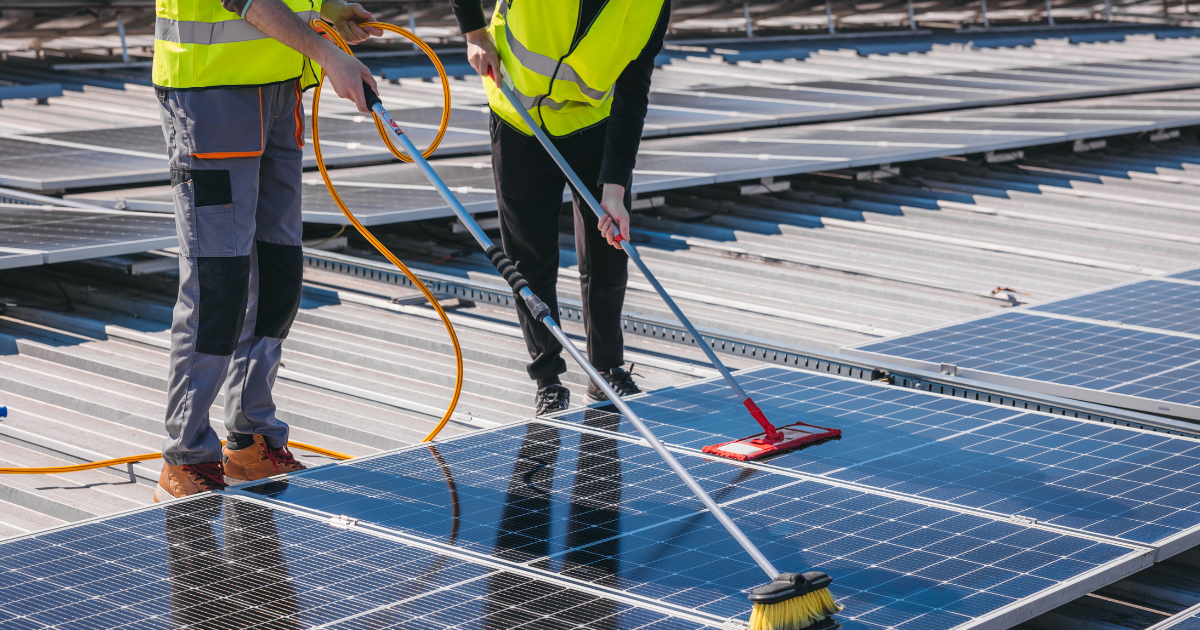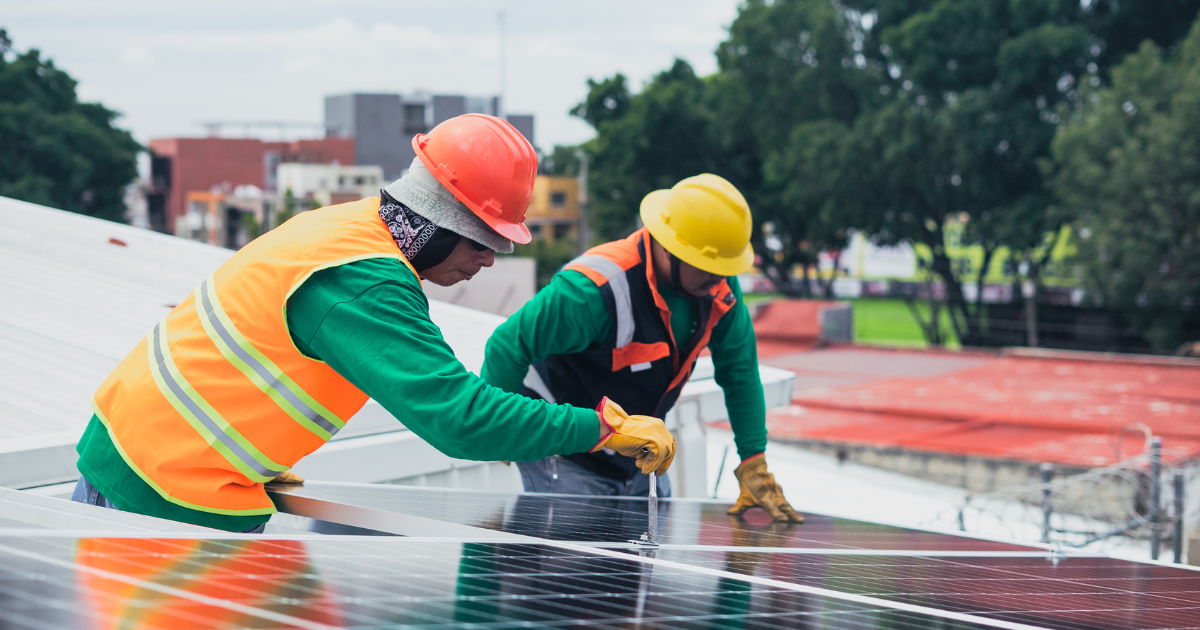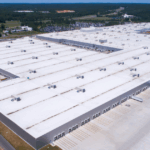
We get it – the pressure to go green is intense. You’re expected to cut energy costs, meet sustainability goals, and future-proof your facility. Commercial solar roofing sounds like the perfect solution until you realize most providers overlook one critical detail: your roof might not be ready.
Many businesses jump into solar installations only to face surprise repairs, costly rework, or damaged systems. Without a roof that’s designed to support solar panels, you risk leaks, voided warranties, and lost investment.
At Silicoat Roofing, we believe your roof shouldn’t be the weak link, it should be the launchpad for clean and reliable energy. That’s why we design commercial roofing systems that do more than accommodate solar – they optimize it.
Thinking about renewable energy? Start with a roof that’s built for the job. Read on to discover how our team helps you go through everything from compatibility to installation, ensuring your building is ready for clean, efficient power.
Understanding Solar Panel Roof Integration
Before anything can be installed, your roof must be evaluated for structural soundness, material compatibility, and access planning. Here’s what needs to be considered:
Structural Considerations
Most solar panel systems add 3–5 pounds per square foot to your roof. That weight may sound minor, but over thousands of square feet, it quickly adds up. Older roofs or those with prior water damage may not be ready to handle this load, which is why it’s absolutely necessary to conduct in-depth structural assessments, examining joists, deck conditions, and support systems. If needed, professionals may reinforce the roofing assembly to ensure safe load distribution.
That’s why Silicoat Roofing conducts detailed assessments before any solar work begins. We evaluate joists, decking, and overall system condition to ensure your roof can safely support a solar array. If needed, we reinforce the roofing assembly to distribute weight effectively and avoid future issues.
Roofing Material Compatibility
Not all roofing systems are equally compatible with solar mounts. Single-ply membranes, built-up roofs, and silicone-coated systems respond differently to penetrations and loading. For instance, TPO and EPDM systems may require custom flashing or reinforcement around solar anchors.
Our seamless silicone systems provide an ideal surface for solar panels. This UV-resistant roof coating‘s flexible properties maintain water-tight integrity even after mounting penetrations – an essential quality in long-term solar roof integration.
Access and Layout Planning
Proper solar planning also involves ensuring safe, efficient rooftop navigation for maintenance crews. These layout decisions are an important part of evaluating fire-resistant commercial roofing options for your building, ensuring safety isn’t compromised during or after solar installation.
We help you design layouts that avoid blocking drains, leave room around HVAC units, and maintain safe walkways. Smart layouts will reduce the risk of damaging panels (or your roof) later.
Designing a solar-compatible roof is only the beginning. Once structural needs, material compatibility, and layout considerations are addressed, the real value of an integrated system comes into focus. Pairing solar with the right roofing solution doesn’t just enable installation, it amplifies performance, extends lifespan, and delivers measurable returns. Let’s look at the benefits of combining energy-efficient roofing with solar power.
Benefits of Energy-Efficient Roofing with Solar Integration
Pairing solar panels with a high-performance roof delivers more than just kilowatts. It’s about energy efficiency and operational longevity.
Enhanced Thermal Performance
Reflective roof coatings reduce rooftop temperatures by 50+ degrees according to the Department of Energy, which can significantly improve the performance of your solar panels and reduce HVAC strain. Panels operate more efficiently at lower temperatures, generating more electricity with less thermal loss.
Our cool roof systems reflect solar radiation, reduce heat gain and improve interior comfort. This means you save on both electricity production and air conditioning demand.
Reduced Lifecycle Costs
When solar system is designed to work together with your building, you’ll spend less time and money on roof restoration, rework, or emergency repair. Silicoat roofs last up to 20 years with minimal maintenance and, when combined with solar panels, this means fewer disruptions, lower operating costs, and better long-term value.
Installing solar on an incompatible or degraded roof often results in premature roof failure, which can force the costly removal and reinstallation of solar panels. By contrast, a solar-ready system supports both durability and energy performance from day one.
Eligible Rebates and Tax Incentives
Many utility programs offer incentives for cool roofs and solar installations. In fact, commercial buildings that combine both technologies often qualify for stackable savings.
Our team helps you research programs like:
- Federal Tax Credit for energy efficiency
- State renewable energy rebates
- Local utility incentives for cool roofs
Pro tip: bundling these incentives can significantly reduce your project cost, depending on your location.
Of course, even the most energy-efficient roof won’t deliver results if the installation process is mismanaged. From structural prep to sealing penetrations, every detail matters. That’s why expert coordination and quality execution are just as important as the materials themselves. Here’s how we ensure your solar-ready roofing system is installed correctly right from the start.

How Silicoat Streamlines the Installation Process
Commercial solar roofing doesn’t need to be complicated. We simplify every step – from assessment to post-installation care.
Step 1: Roof Inspection and Prep
We begin with a comprehensive evaluation of your existing system, identifying any weak points or needed upgrades before solar can be installed. Our inspection includes moisture scans and an assessment of existing drainage and insulation.
If we identify vulnerabilities such as blistering, ponding, or insulation degradation, we can recoat or repair before solar installation proceeds. This ensures a clean, durable base for the new system.
Step 2: Solar Mount Compatibility Planning
We assess your chosen mounting system for compatibility with your roof type. Whether your solar system uses ballasted racks, mechanical anchors, or hybrid mounts, we’ll ensure they don’t compromise waterproofing or structural integrity.
Furthermore, our silicone coatings are re-sealable, which means that even after anchor points are installed, the membrane can be fully sealed and warrantied.
Step 3: Installation Support
We don’t just “step aside” for your solar provider, we coordinate actively. From layout planning to day-of installation oversight, our team ensures every step aligns with your building’s needs.
If something needs to be modified, like roof curbs, pitch pockets, or layout changes, we can handle that too, so the install goes smoothly.
Step 4: Post-Install Warranty and Maintenance
After installation, we provide updated warranty documentation covering the integrated system. We also offer proactive roof maintenance visits to assess both the roofing and solar components, keeping your investment protected.
“Solar is a long-term investment. But if your roof isn’t built to support it, you’re risking everything. Our job is to make sure your roof and solar system work in harmony for decades to come.” – Rock Dodaj, Founder of Silicoat Roofing.
Even with the right materials and expert installation, clear planning is what brings it all together. From rooftop layouts to permit requirements, visualizing the project before work begins helps avoid surprises and ensures every detail aligns with your goals. That’s why we provide advanced planning tools that turn complex decisions into clear, confident steps.
Getting Your Roof Ready for Solar
Planning a solar installation starts with understanding your roof’s current condition – that’s where Silicoat delivers real value. Our comprehensive inspection and documentation process gives your solar provider everything they need to design a successful system.
Detailed Roof Assessments
Before any solar installation moves forward, we conduct a full visual inspection of your existing roof. This includes:
- Identifying vulnerable areas such as ponding, cracks, or blistering
- Documenting rooftop equipment like HVAC units and vents
- Reviewing drainage paths and insulation condition
- Recommending necessary repairs or recoating to ensure a watertight, solar-ready surface
Layout Guidance for Solar Integration
Our team offers practical guidance on rooftop planning, including:
- Ensuring clear access paths for service and maintenance
- Avoiding areas that interfere with drainage or equipment
- Preserving membrane integrity during and after solar installation
We work closely with your solar installer to ensure mounting systems are compatible with our silicone coatings and don’t void your warranty.
Clear Documentation for Contractors and Stakeholders
Our inspection and project prep process includes detailed documentation to keep your solar project on track. We provide:
- Photographic evidence of current roof conditions and vulnerable areas
- Written summaries of recommended repairs or coating requirements
- Compatibility notes for solar installers regarding mounts and penetrations
- Maintenance guidelines to preserve roof integrity after installation
- Insurance-ready records that verify roof condition, support warranty claims, and strengthen insurance documentation
This documentation helps align contractors, secure permits, and give your team full visibility into what’s needed for a successful solar-ready roof.

Common Questions About Solar Roof Compatibility
Can solar panels be installed on an older commercial roof?
Only after inspection. In some cases, reinforcement or recoating is required before installation.
Will solar mounting systems damage my roof?
Not when installed over a quality silicone membrane. Our systems remain sealed, flexible, and fully warrantied, even with penetrations.
What if my solar installer doesn’t coordinate with my roofer?
That’s a major risk. We coordinate directly with solar teams to ensure roofing integrity and compatibility – and highly recommend our clients to use this approach.
Can I add solar during a roof replacement?
Yes, and it’s actually ideal. This allows for full alignment between the roof system and solar integration, reducing cost and improving long-term performance.
What maintenance is required for a solar-integrated roof?
We recommend annual inspections, especially after storms. Silicoat offers bundled roof + solar checkups.
Future-Proof Your Roof with Silicoat
Commercial solar roofing is more than an energy upgrade, it’s a whole building upgrade. The right roofing system makes solar easier, more efficient, and far less risky.
At Silicoat, we don’t just install roof coatings, we help businesses build smarter, more sustainable properties. With decades of experience in energy-efficient roofing and solar readiness, we’re the partner facility managers in the Detroit area trust the most.
Ready to make your roof solar-compatible? Contact us today to get a free evaluation and start planning a system that works for your roof – not against it.
About the Author
Rick Dodaj is the founder and CEO of Silicoat Roofing, specializing in commercial roofing solutions that protect businesses and their investments. With extensive experience in commercial roofing, Rick leads a team dedicated to providing cost-effective, long-lasting roofing solutions. Connect with him on LinkedIn to learn more about commercial roof maintenance and protection strategies.


 Previous Post
Previous Post Next Post
Next Post